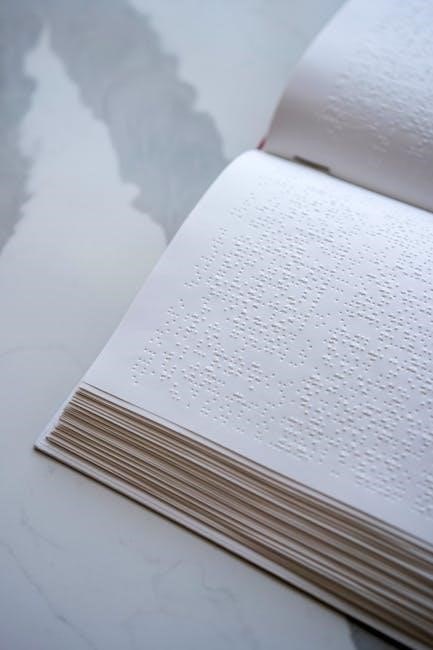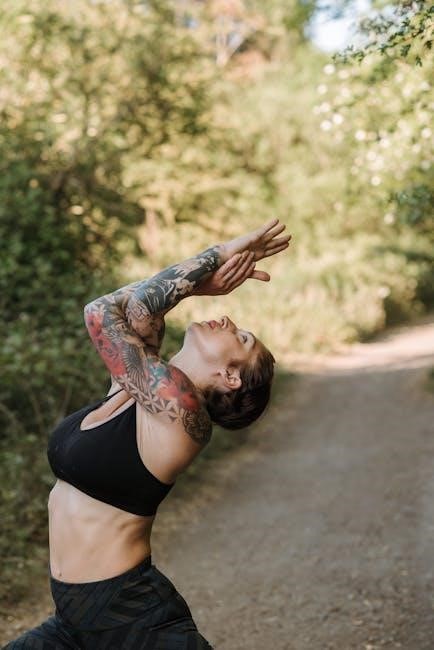trail guide to the body book
- by antonina

Trail Guide to the Body: A Comprehensive Guide
Andrew Biel’s Trail Guide to the Body is an essential resource.
It provides a comprehensive understanding of anatomy, aiding students,
athletes, and healthcare professionals in mastering palpation and
musculoskeletal knowledge.
Trail Guide to the Body, a renowned resource by Andrew Biel, serves as
an accessible gateway to understanding the complexities of human anatomy.
Specifically focusing on the musculoskeletal system, this book stands out
as a practical and user-friendly manual; It is designed for students,
therapists, athletes, and anyone eager to explore the palpable structures
of the body. The Trail Guide emphasizes hands-on learning through
palpation techniques, enabling readers to locate muscles, bones, and
ligaments with precision. Its clear diagrams and concise descriptions
demystify anatomical concepts. The book bridges the gap between theoretical
knowledge and practical application. It facilitates a deeper
comprehension of how the body functions and moves. Its enduring popularity
stems from its effectiveness in making anatomy both engaging and relevant
for various fields. This includes bodywork, athletic training, and
healthcare.

Overview of the Book
Trail Guide to the Body offers clear diagrams and descriptions for
athletes and students. It is an essential tool for grasping basic
anatomy and understanding body structures.
Purpose and Target Audience of the Book
The primary purpose of Trail Guide to the Body is to provide a clear and accessible resource for learning musculoskeletal anatomy and palpation techniques. It aims to simplify the complex structures of the human body, making it easier for students, therapists, and fitness enthusiasts to understand and locate muscles, bones, and ligaments.
The book is specifically targeted towards students of anatomy, massage therapy, physical therapy, athletic training, and other bodywork modalities. It also serves as a valuable reference for athletes seeking to improve their understanding of their own bodies and for healthcare professionals who need a reliable guide to palpation and anatomical landmarks. Whether you’re a beginner or an experienced practitioner, Trail Guide to the Body provides a solid foundation for mastering essential bodywork skills.
Key Features: Illustrations and User-Friendly Design
Trail Guide to the Body is renowned for its exceptional illustrations and user-friendly design. The book features over 1,100 detailed illustrations that clearly depict muscles, bones, ligaments, and bony landmarks. These visuals are designed to make learning anatomy more engaging and memorable.
The book’s layout is carefully structured to facilitate easy navigation and comprehension. Clear descriptions accompany each illustration, explaining how to locate different muscles and bones; The text is written in a straightforward style, avoiding overly technical jargon. Bony landmark trails guide the reader through the palpation process, enhancing their ability to identify specific anatomical structures. This combination of visual aids and accessible language makes Trail Guide to the Body an invaluable tool for anyone studying or practicing bodywork.

Content and Structure
This guide covers muscles, the skeletal system, palpation, bony landmarks, and ligaments.
It is structured for easy learning and understanding of the body’s
complex anatomical relationships.
Muscles and Skeletal System Coverage
The Trail Guide to the Body provides extensive coverage of the muscular and skeletal systems,
fundamental components of human anatomy. This section delves into the intricacies
of over 125 muscles, detailing their origins, insertions, actions, and innervations.
Clear illustrations accompany the text, making it easier to visualize and understand the
complex relationships between muscles.
Furthermore, the book thoroughly explores the skeletal system, covering all 206 bones
of the human body. Each bone is described in detail, including its location,
articulations, and key bony landmarks. The comprehensive nature of this coverage makes
the Trail Guide an invaluable resource for students, athletes, and healthcare
professionals seeking a deep understanding of musculoskeletal anatomy. The
clear, concise presentation ensures that even complex concepts are easily grasped.
Palpation Techniques and Bony Landmarks
A key strength of the Trail Guide to the Body lies in its detailed instruction
on palpation techniques. The book guides readers through the process of locating
and identifying specific anatomical structures through touch. These techniques are
essential for bodyworkers, therapists, and anyone involved in manual assessment
and treatment.
Emphasis is placed on mastering the palpation of bony landmarks. With over 110 bony
landmarks covered, the Trail Guide provides a comprehensive roadmap for
navigating the human body. Clear descriptions and illustrations show exactly how to
locate each landmark, enabling users to confidently identify underlying structures.
This focus on palpation and bony landmarks makes the book an invaluable tool for
developing essential hands-on skills, crucial for accurate assessment and
effective treatment strategies within various healthcare and fitness disciplines.
Ligaments and Other Anatomical Structures
Beyond muscles and bones, the Trail Guide to the Body extends its coverage to
include ligaments and other crucial anatomical structures. This broader perspective
allows for a more holistic understanding of the musculoskeletal system. The book
provides detailed illustrations and descriptions of key ligaments, explaining their
location, function, and importance in joint stability.
Furthermore, the Trail Guide delves into other anatomical elements such as
fascia. It highlights the role of fascia in connecting and supporting various
structures throughout the body. By exploring these elements, the book equips
readers with a deeper understanding of how different tissues interact and contribute
to overall movement and function. This comprehensive approach makes it valuable
for those seeking a thorough knowledge of the human body’s intricate network of
supporting structures, going beyond just muscles and bones.

Benefits and Uses
Trail Guide to the Body benefits students, athletes, and professionals. It
enhances anatomical understanding, palpation skills, and bodywork techniques.
Its practical approach is valuable across various disciplines.
For Students of Anatomy and Bodywork
Trail Guide to the Body is an invaluable asset for anatomy and bodywork
students. Its clear diagrams and descriptions simplify complex anatomical
concepts, making learning more accessible and engaging. The book’s focus on
palpation techniques is particularly beneficial, enabling students to develop
hands-on skills essential for their future practice. By providing a solid
foundation in musculoskeletal anatomy, the guide empowers students to
confidently identify and understand the body’s structures.
Moreover, the user-friendly design and comprehensive coverage make it an ideal
companion throughout their studies. Whether learning about muscles, bones, or
ligaments, students can rely on the Trail Guide for clear explanations
and practical application. This resource enhances their ability to learn.
For Athletes and Fitness Enthusiasts
Trail Guide to the Body offers athletes and fitness enthusiasts a
unique advantage. Understanding basic anatomy is crucial for optimizing
performance and preventing injuries. This book provides clear diagrams and
descriptions of muscles and bones, enabling individuals to identify and target
specific areas for training and recovery. By learning palpation techniques,
athletes can become more attuned to their bodies, recognizing potential
problems early on.
The guide empowers individuals to take a proactive approach to their fitness
journey. It provides insights into musculoskeletal anatomy. Whether
rehabilitating an injury or enhancing athletic capabilities. The Trail
Guide offers the knowledge needed to train smarter and more effectively.
Athletes can confidently use it.
For Healthcare Professionals and Therapists
Trail Guide to the Body is an indispensable tool for healthcare
professionals and therapists, providing a deeper understanding of anatomy to
better serve their clients. This comprehensive guide enhances the ability to
locate and isolate problem areas, crucial for effective treatment planning and
execution. The detailed illustrations and user-friendly design facilitate the
mastery of palpation skills, enabling accurate assessment and diagnosis.
The book offers a solid foundation in musculoskeletal anatomy, empowering
therapists to confidently address a wide range of conditions. From sports
massage therapists to osteopathy students, anyone needing to pinpoint specific
anatomical structures will find this guide invaluable. It helps to understand
the body’s complexity and to provide targeted and effective interventions,
leading to better patient outcomes.
Reviews and Customer Feedback
Customers consider Trail Guide to the Body a valuable resource,
praising its clarity and practical application. It is considered to be one
of the best resources for anatomy students.
Overall Value and Quality
The Trail Guide to the Body consistently receives high marks for its
overall value and quality as an educational resource. It’s considered a
gold-standard text, particularly useful for students of anatomy, bodyworkers,
therapists, and athletic trainers. The book is praised for making
musculoskeletal anatomy and palpation easy to understand through clear
diagrams and descriptions. Users highlight its practical applicability,
especially for those needing to locate and isolate specific areas for
treatment. Many consider it a must-have for schools teaching bodywork.
While some may find the cost a factor, the comprehensive content and
user-friendly design are deemed worth the investment. Its detailed
illustrations further enhance learning, making it an invaluable tool for
understanding the human body’s complexities. Its worth its weight in gold!
Positive and Negative Aspects
The Trail Guide to the Body is lauded for its clear diagrams, detailed
descriptions, and user-friendly approach, making complex anatomical
information accessible; Positive aspects include its usefulness for various
users, from students to experienced practitioners, and its effectiveness in
teaching palpation skills. Many appreciate its comprehensive coverage of
muscles, bones, and ligaments, making it a valuable resource for
understanding musculoskeletal anatomy.
However, some criticisms focus on the book’s cost, which may be a barrier
for some individuals. Additionally, while comprehensive, the sheer volume
of information might be overwhelming for beginners. Despite these minor
drawbacks, the book’s benefits generally outweigh its negatives.

Editions and Updates
The Trail Guide to the Body has evolved through several editions, with
the 6th edition now available. Each update refines the content, improving
clarity and incorporating new anatomical insights.
Evolution of the Trail Guide to the Body
The Trail Guide to the Body has undergone significant evolution since its
initial publication, reflecting advancements in anatomical understanding and
pedagogical approaches. Early editions laid the foundation with clear
illustrations and palpation techniques, establishing it as a core resource
for bodywork professionals and students. Subsequent updates have expanded
the content, incorporating more muscles, bony landmarks, and ligaments,
while refining the user-friendly design. The inclusion of online resources,
digital reviews, and interactive tools marks a shift towards blended
learning, catering to diverse learning styles. The latest editions address
customer feedback, improving clarity and adding practical applications for
athletes and therapists. This ongoing evolution ensures the Trail Guide
remains a gold-standard text in musculoskeletal anatomy education.
Related posts:
Unleash your inner explorer with the Trail Guide to the Body! Navigate anatomy like a pro. Get your copy in the United Kingdom and start your journey today!
Posted in United Kingdom